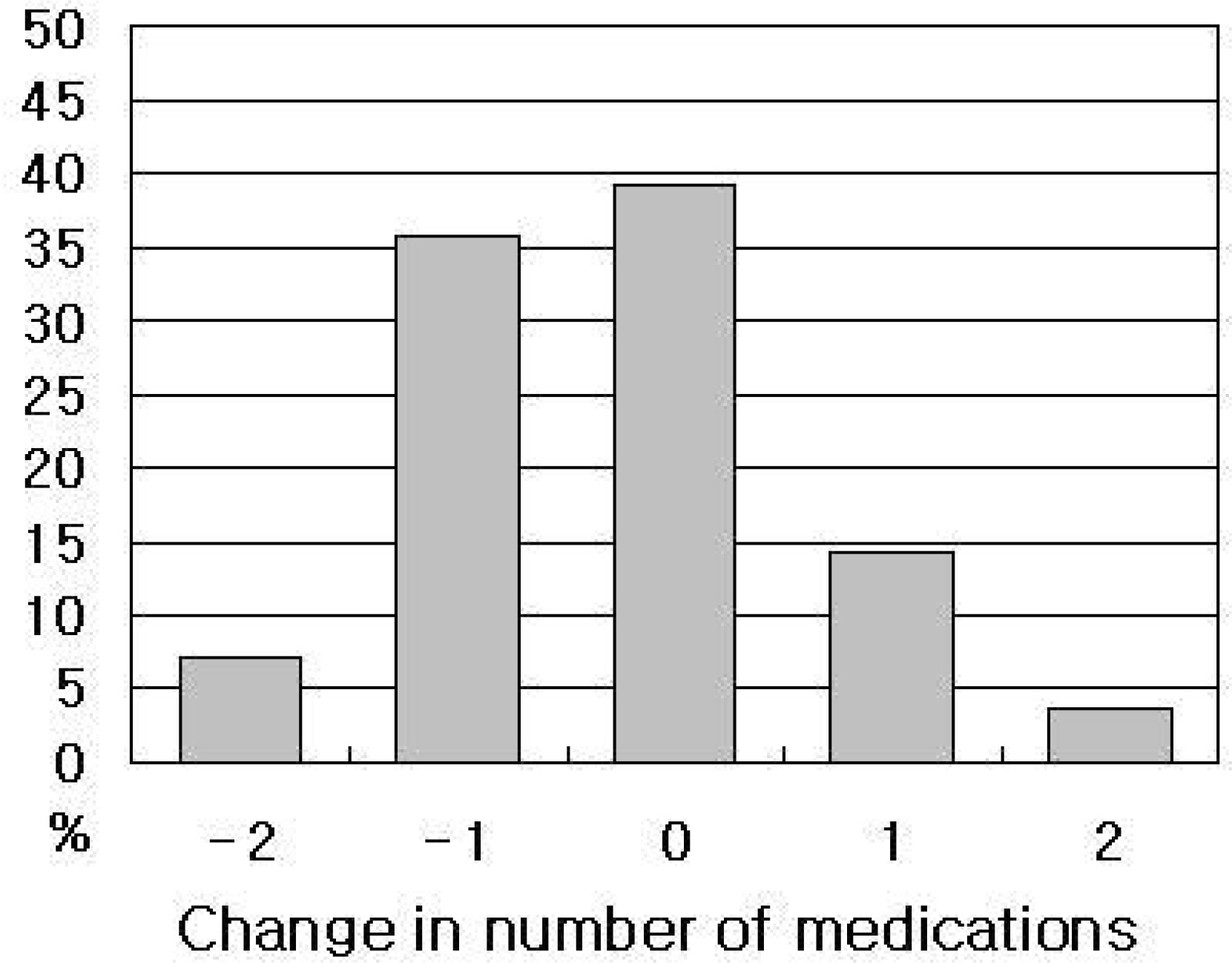J Korean Ophthalmol Soc.
2007 Nov;48(11):1506-1511.
Phacoemulsification in Patients with Ahmed Glaucoma Valve Implant
- Affiliations
-
- 1Department of Ophthalmology and Visual Science, College of Medicine, The Catholic University of Korea, Seoul, Korea. mdahn@catholic.ac.kr
Abstract
-
PURPOSE: To investigate the effects of phacoemulsification in glaucomatous eyes with a functioning Ahmed glaucoma valve insertion.
METHODS
This retrospective analysis followed 28 eyes from 26 patients with a functioning Ahmed glaucoma valve who had clear corneal phacoemulsification from December 1999 to February 2006. Intraocular pressure (IOP), best corrected visual acuity (BCVA), number of glaucoma medications and additional glaucoma surgeries were measured.
RESULTS
The mean IOP before phacoemulsification was 17.4 mmHg +/- 5.8 (SD). Postoperative IOP was 13.6 +/- 4.4 mmHg, 13.7 +/- 4.0 mmHg, 14.1 +/- 4.0 mmHg and 15.4 +/- 3.8 mmHg at 1, 2, 6, and 12 months, respectively. The change in the number of glaucoma medications significantly changed at 1 month (p<0.05), but did not change at 2, 6 and 12 months (p>0.05) postoperatively. The IOP significantly changed at 1 week, 1 month, 2 months, and 6 months (p<0.05), but did not significantly change at 12 months (p>0.05) postoperatively. No eyes required additional surgery. BCVA improved in 23 eyes; the mean improvement was 3.7 +/- 2.9 Snellen lines at 2 months postoperatively.
CONCLUSIONS
Phacoemulsification in glaucomatous eyes with a functioning Ahmed glaucoma valve improved BCVA and maintained control of IOP.
MeSH Terms
Figure
Reference
-
References
1. AGIS Investigators. The Advanced Glaucoma Intervention Study, 8: risk of cataract formation after trabeculectomy. Arch Ophthalmol. 2001; 119:1771–80.2. Quigley HA. Reappraising the risks and benefits of aggressive glaucoma therapy. Ophthalmology. 1997; 104:1985–6.
Article3. Wilensky JT, Chen TC. Long-term results of trabeculectomy in eyes that were initially successful. Trans Am Ophthalmol Soc. 1996; 94:147–59.
Article4. Chen PP, Weaver YK, Budenz DL, et al. Trabeculectomy function after cataract extraction. Ophthalmology. 1998; 105:1928–35.5. Verges C, Cazal J, Lavin C. Surgical strategies in patients with cataract and glaucoma. Curr Opin Ophthalmol. 2005; 16:44–52.
Article6. Caprioli J, Park HJ, Kwon YH, Weitzman M. Temporal corneal phacoemulsification in filtered glaucoma patients. Trans Am Ophthalmol Soc. 1997; 95:153–67.7. Gujral S, Nouri-Mahdavi K, Caprioli J. Outcomes of small-incision cataract surgery in eyes with preexisting Ahmed glaucoma valves. Am J Ophthalmol. 2005; 140:911–3.
Article8. Sa HS, Kee C. Effect of temporal clear corneal phacoemulsification on intraocular pressure in eyes with prior Ahmed glaucoma valve insertion. J Cataract Refract Surg. 2006; 32:1011–4.
Article9. Erie JC, Baratz KH, Mahr MA, et al. Phacoemulsification in patients with Baerveldt tube shunts. J Cataract Refract Surg. 2006; 32:1489–91.
Article10. Chung HW, Kook MS, Tchah HW. Ahmed valve implant and penetrating keratoplasty. J Korean Ophthalmol Soc. 2003; 44:73–80.11. Bhattacharyya CA, WuDunn D, Lakhani V, et al. Cataract surgery after tube shunts. J Glaucoma. 2000; 9:453–7.
Article12. Huang MC, Netland PA, Coleman AL, et al. Intermediate-term clinical experience with the Ahmed glaucoma valve implant. Am J Ophthalmol. 1999; 127:27–33.13. Wilson MR, Mendis U, Paliwal A, et al. Long-term follow-up of primary glaucoma surgery with Ahmed glaucoma valve implant versus trabeculectomy. Am J Ophthalmol. 2003; 136:464–70.
Article14. Mandal AK, Chelerkar V, Jain SS, et al. Outcome of cataract extraction and posterior chamber intraocular lens implantation following glaucoma filtration surgery. Eye. 2005; 19:1000–8.
Article15. Seah SKL, Jap A, Prata JA Jr, et al. Cataract surgery after trabeculectomy. Ophthalmic Surg Lasers. 1996; 27:587–94.
Article16. Bigger JF, Becker B. Cataracts and primary open-angle glaucoma: the effect of uncomplicated cataract extraction on glaucoma control. Trans Am Acad Ophthalmol Otolaryngol. 1971; 75:260–72.17. Shingleton BJ, O'Donoghue MW, Hall PE. Results of phacoemulsification in eyes with preexisting glaucoma filters. J Cataract Refract Surg. 2003; 29:1093–6.
Article18. Mangione CM, Phillips RS, Lawrence MG, et al. Improved visual function and attenuation of declines in health-related quality of life after cataract extraction. Arch Ophthalmol. 1994; 112:1419–25.
Article19. Hayashi K, Hayashi H, Nakao F, Hayashi F. Influence of cataract surgery on automated perimetry in patients with glaucoma. Am J Ophthalmol. 2001; 132:41–6.
Article
- Full Text Links
- Actions
-
Cited
- CITED
-
- Close
- Share
- Similar articles
-
- Leakage of Intraocular Silicone Oil into the Subconjunctival Space and Orbit through an Ahmed Glaucoma Valve
- Preserved Fascia Lata Transplantation for Implant Plate Exposure after Ahmed Glaucoma Valve Implant Surgery: One Case
- Ahmed Glaucoma Valve Implant in Refractory Glaucoma
- A Clinical Study of the Ahmed valve Implant in Refractory Glaucoma
- The Effectiveness of Surface Area Extension with Pericardial Membrane in Ahmed Glaucoma Valve Implant Surgery



